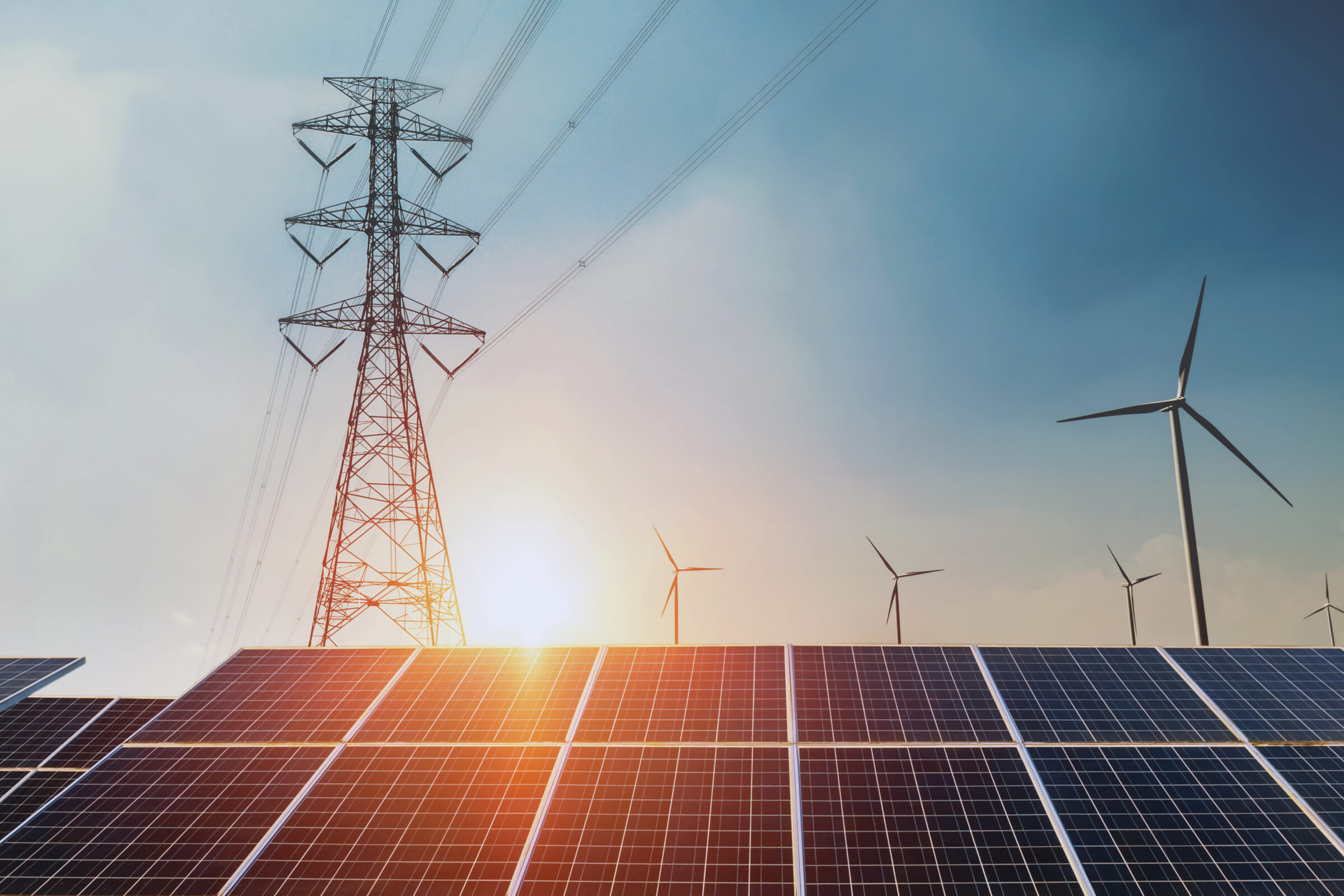- Project Finance
- Tax Incentives & Appropriations
- Comments & Testimony
Additional ACORE Comments on Domestic Content Response to Notice 2024-41
September 10, 2024
Via Electronic Submission
Office of Associate Chief Counsel
(Passthroughs & Special Industries)
Internal Revenue Service
1111 Constitution Ave NW
Washington, DC 20224
Additional ACORE Comments on Domestic Content Response to Notice 2024-41: Expansion of Applicable Projects for Safe Harbor in Notice 2023-38 and New Elective Safe Harbor to Determine Cost Percentages for Adjusted Percentage Rule
Dear Office of Associate Chief Counsel,
The American Council on Renewable Energy (ACORE) is pleased to submit these comments in response to Notice 2024-41 (“the Notice”) published by the U.S. Department of the Treasury (“Treasury”) and Internal Revenue Service (“IRS”) providing a new safe harbor that taxpayers may elect to classify certain components and to calculate the “Domestic Cost Percentage” in an applicable project (the “New Elective Safe Harbor”) to qualify for the domestic content bonus credit amounts under §§ 45, 45Y, 48, and 48E of the Internal Revenue Code.
ACORE applauds the efforts by Treasury and the IRS to provide a more workable pathway for taxpayers to access the domestic content bonus credit through the establishment of the New Elective Safe Harbor. Our comments address further areas of improvement related to repowered assets, unlocking their eligibility for the New Elective Safe Harbor. We also recommend immediate expansion of the New Elective Safe Harbor to include offshore wind and other key clean energy technologies.
On the eligibility of repowered assets:
Any inconsistency between Notice 2024-41 and the prior Notice 2023-38 related to repowered or retrofitted clean energy assets could have significant implications for repowering or retrofitting activities in the clean energy sector. Notice 2023-38, Section 4, states that a “retrofitted project” that contains used property will qualify for the tax credit if the used property’s fair value is no more than 20 percent of the applicable project’s total value (“80/20 rule”), and that such projects are eligible for
the bonus if the new property in the retrofit satisfies the domestic content requirements. However, Notice 2024-41, Table 1 (the “New Elective Safe Harbor”) does not include a discussion of how the safe harbor applies to retrofitted projects.
Repowering contributes both economic and environmental value by prolonging the useful life of an existing wind or solar energy project. Based on current estimates from BloombergNEF, roughly 1.3 gigawatts (GW) of land-based wind assets will be repowered in 2024, and that number is projected to surpass 30 GW over the next decade.1 Experts also project that approximately 23 GW of solar assets will reach the 15-year average benchmark for first- and second-generation inverters within the next five years, suggesting that nearly 5 GW of solar projects will require new inverter replacements each year until 2030.2
The exclusion of retrofitted assets from Table 1 could have the unintended consequence of locking in less efficient wind and solar technologies that provide lower returns for project participants. The eligibility of retrofitted assets for the New Elective Safe Harbor is thus an important consideration for project owners and developers as they structure financing and source necessary equipment.
Confirmation that retrofitted assets are eligible for the new elective safe harbor, and how the safe harbor applies, is critical for ensuring taxpayers have the flexibility they need to capture the economic and efficiency gains offered by this asset class and unlock full market potential.
Specifically, for situations in which projects do not contain all of the Applicable Project Components (ACPs) and Manufactured Product Components (MPCs) under Table 1, Notice 2024-41 states the following:3
“Any Applicable Project Component or Manufactured Product Component listed in Table 1 of this notice that is not utilized as an input to the Applicable Project must be treated by the electing taxpayer as having a zero value in calculating the Domestic Content Percentage. An Applicable Project Component or Manufactured Product Component contained in a taxpayer’s Applicable Project but not listed in Table 1 of this notice will not disqualify the taxpayer from using the New Elective Safe Harbor. However, such unlisted items may not count toward satisfying the Adjusted Percentage Rule. The absence of a Manufactured Product or Manufactured Product Component that is listed in Table 1 of this notice, or the presence of a Manufactured Product or Manufactured Product Component that is not listed in Table 1 of this notice, in an Applicable Project does not affect the Assigned Cost Percentages listed in Table 1 for purposes of the New Elective Safe Harbor.”
While it is reasonable that APCs and MPCs that are not used as inputs to an applicable project would not counted toward a taxpayer’s domestic content percentage, assigning such inputs a “zero value”, rather than discounting them from the calculation entirely, would position projects that do not use all of the components listed in Table 1 at a distinct disadvantage, as other commenters have noted.4
The rules as written above appear to require taxpayers to reflect zero values for unused items only in the numerator but add the default cost percentages associated with those inputs to the denominator, which essentially would result in the treatment of unutilized equipment as foreign components. The failure to distinguish between foreign and non-existent components would ultimately penalize both retrofitted and greenfield projects that, either for technological or financial reasons, do not comport with the full list of components in Table 1.5 ACORE does not believe that the new elective safe harbor was intended to, nor should be, so overly prescriptive.
Similar to the Notice’s omission of a reference to retrofitted projects under the new elective safe harbor, assigning a zero value for unutilized components would be inconsistent with Notice 2023-38, which provides that:6
“An Applicable Project that is placed in service after December 31, 2022, and meets the 80/20 Rule is eligible for a domestic content bonus credit amount if the new property in the Applicable Project meets the Domestic Content Requirement and the taxpayer complies with the requirements described in this notice.”
Notice 2023-38 rightly allows satisfaction of the domestic content requirements solely with respect to “new property”. As such, ACORE supports carrying over this interpretation in any future updates to the new elective safe harbor.
Recommendation: ACORE respectfully urges Treasury and the IRS to clarify that retrofitted projects, as described in Section 4 of Notice 2023-38, may elect to use the Assigned Cost Percentages listed for any of the components in Table 1 of the Notice. We recommend the inclusion of a footnote or addendum to Table 1 to address this issue.
In doing so, we additionally request that Treasury and the IRS reincorporate the approach under Notice 2023-38 concerning situations in which applicable projects do not use all of the components in Table 1 by normalizing the domestic content percentage calculation only to new property. ACORE supports an approach that allows taxpayers to discount any APCs and MPCs in Table 1 that are unutilized by an applicable project, such that the numerator consists of the values for new and domestically sourced APCs and MPCs, while the denominator reflects the values for all corresponding APCs and MPCs that are actually included in the applicable project.
As part of this suggested approach, ACORE further asks Treasury and the IRS to clarify that the values for iron and steel components need not be considered unless the taxpayer’s applicable project replaces equipment subject to those requirements.
On the addition of further technologies and timing of updates to Table 1:
The remainder of these comments respond directly to the first question posed by Treasury and the IRS in Notice 2024-41, as follows:
(1) Are there are any other technologies, or technology subsets, that should be addressed by Table 1 of this notice, and what criteria should be used for new additions? How often should these tables be updated?
ACORE appreciates the New Elective Safe Harbor Table (“Table 1”) and commends Treasury and the IRS for providing an alternative to the safe harbor table established under of the prior Notice 2023-38 (“Table 2”). As our comments in response to Notice 2023-38 stated, the requirement under Notice 2023-38 to rely on manufacturers’ direct materials and labor costs is highly unworkable, forcing taxpayers both to conduct an exhaustive analysis of every de facto subcomponent used in a project and compel third-party suppliers to relinquish sensitive pricing information that routinely lies outside the scope of IRS audits.7
The New Elective Safe Harbor is a timely solution to these issues. However, its effectiveness is limited to the suite of technologies in the table. The technologies that are not listed, such as offshore wind, geothermal, and hydropower, remain stranded with the direct cost requirement and subcomponent treatment that persists under Notice 2023-38. ACORE respectfully recommends the following enhancements to Table 1 to further prioritize certainty, uniformity and workability for the domestic content bonus credit.
Recommendation: The decision to establish the New Elective Safe Harbor has already improved market confidence around access to the domestic content bonus credit and should be broadened to incorporate the full slate of technologies eligible to claim the credit currently. In particular, ACORE appreciates Treasury’s indication that it is contemplating the addition of other sectors, including offshore wind, to Table 1 in future proposed regulations.8 We strongly support the addition of offshore wind to the New Elective Safe Harbor and encourage Treasury to make the addition as soon as practical.9
Thank you for your consideration of these comments. We applaud your deliberate and extensive public engagement as you implement these essential policies and look forward to our continued partnership in leveraging these provisions to build out a fully domestic clean energy supply chain for generations to come.
For any additional questions, please contact Lesley Hunter, ACORE’s Senior Vice President of Policy & Engagement, at hunter@acore.org.
Author

ACORE Team Member
1 BloombergNEF. 1H 2024 US Clean Energy Market Outlook: Moving Past 2030 (May 2024), available at: https://www.bnef.com/insights/34063.
2 Munson, S. et al. Repowering: Critical financing considerations for retrofitting wind and solar energy property (June 2024), available at: https://www.cohnreznick.com/insights/retrofitting-wind-solar- energy-property-key-considerations.
3 Notice 2024-41, § 4.02.
4 For example, see comments by the American Clean Power Association on Notice 2024-41.
5 Assigning a zero value to non-existent components is especially significant to retrofitted projects in such cases taxpayers may not replace all the components of the existing projects.
6 Notice 2023-38, § 4.02.
7 See additional ACORE comments from May 2023 here: https://acore.org/resources/additional-acore- comments-on-domestic-content/.
8 U.S. Department of the Treasury. U.S. Department of the Treasury, IRS Release Additional Guidance to Boost American Clean Energy Manufacturing (May 2024), available at: https://home.treasury.gov/news/press-releases/jy2344.
9 For further considerations regarding the addition of offshore wind technology to the next elective safe harbor, see for example comments by the American Clean Power Association on Notice 2024-41.
Join leaders from across the clean energy sector.

What will our next 20 years look like? Here’s the truth: they’ll be better with ACORE at the forefront of energy policy.
Shannon Kellogg
Amazon Web Services (AWS)
